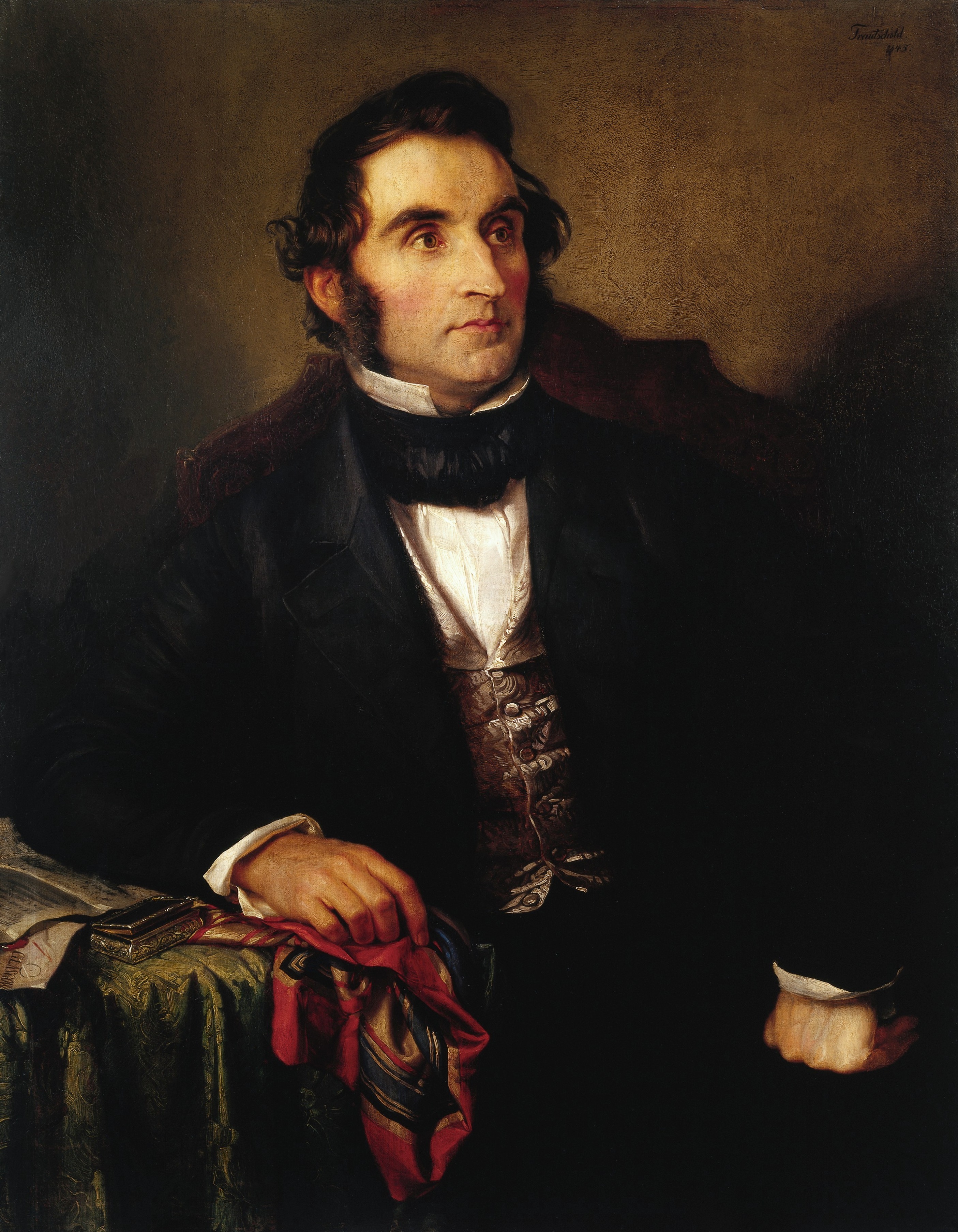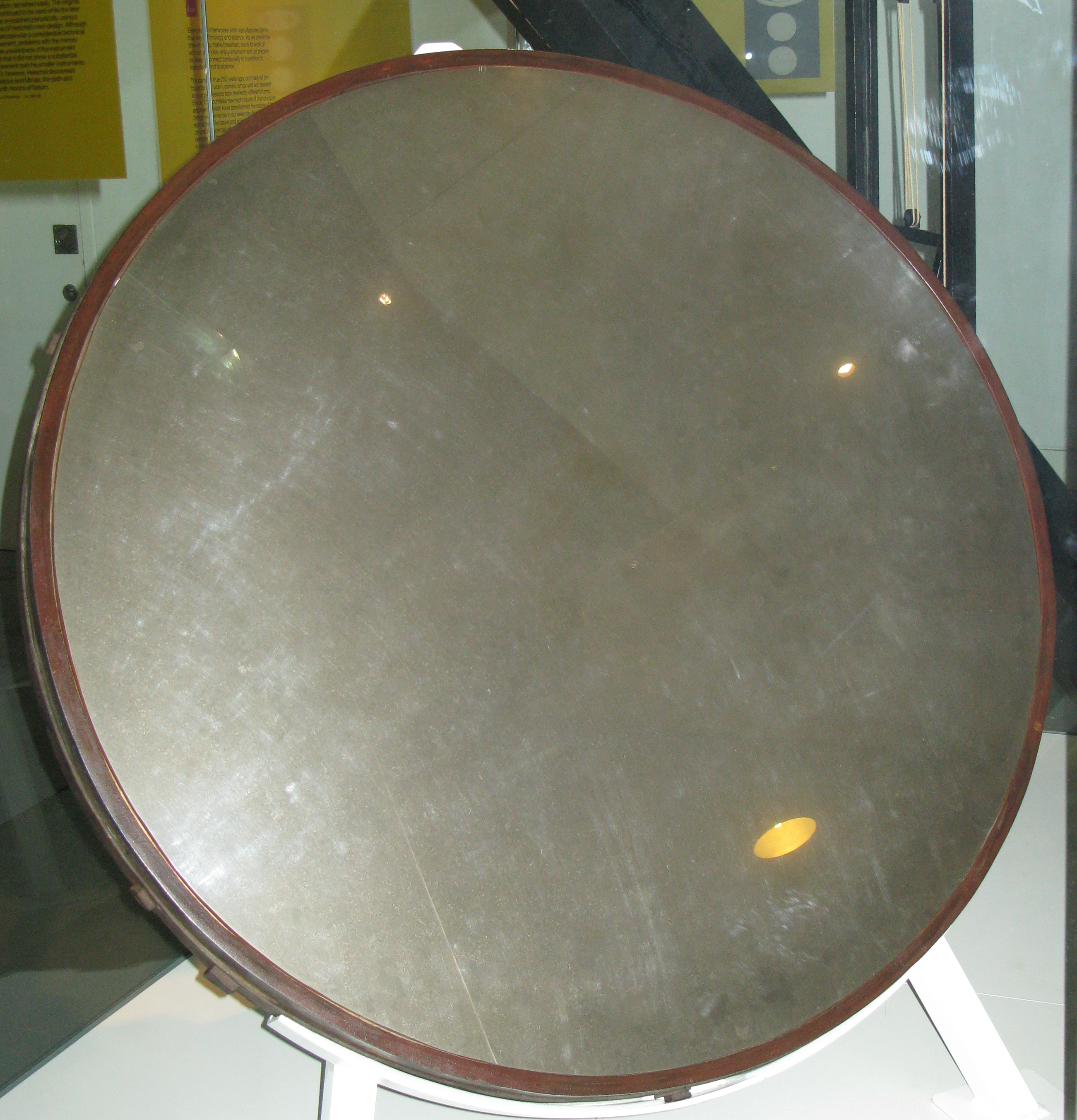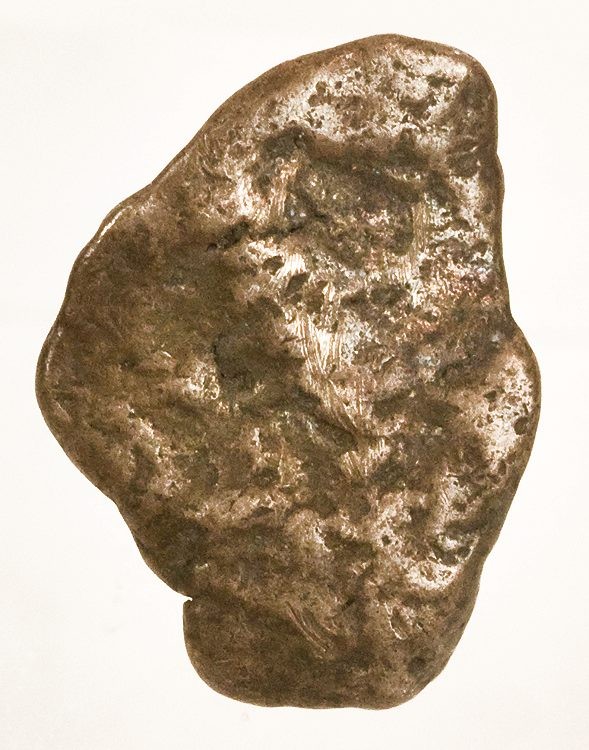|
Silvering
Silvering is the chemical process of coating a non-conductive substrate such as glass with a reflective substance, to produce a mirror. While the metal is often silver, the term is used for the application of any reflective metal. Process Most common household mirrors are "back-silvered" or "second-surface", meaning that the light reaches the reflective layer after passing through the glass. A protective layer of paint is usually applied to protect the back side of the reflective surface . This arrangement protects the fragile reflective layer from corrosion, scratches, and other damage. However, the glass layer may absorb some of the light and cause distortions and optical aberrations due to refraction at the front surface, and multiple additional reflections on it, giving rise to "ghost images" (although some optical mirrors such as Mangins, take advantage of it). Therefore, precision optical mirrors normally are "front-silvered" or " first-surface", meaning that the refl ... [...More Info...] [...Related Items...] OR: [Wikipedia] [Google] [Baidu] |
Mirror
A mirror or looking glass is an object that Reflection (physics), reflects an image. Light that bounces off a mirror will show an image of whatever is in front of it, when focused through the lens of the eye or a camera. Mirrors reverse the direction of the image in an equal yet opposite angle from which the light shines upon it. This allows the viewer to see themselves or objects behind them, or even objects that are at an angle from them but out of their field of view, such as around a corner. Natural mirrors have existed since prehistoric times, such as the surface of water, but people have been manufacturing mirrors out of a variety of materials for thousands of years, like stone, metals, and glass. In modern mirrors, metals like silver or aluminium are often used due to their high reflectivity, applied as a thin coating on glass because of its naturally smooth and very Hardness (materials science), hard surface. A mirror is a Wave (physics), wave reflector. Light consis ... [...More Info...] [...Related Items...] OR: [Wikipedia] [Google] [Baidu] |
Tollens' Reagent
Tollens' reagent (chemical formula Ag(NH3)2OH) is a chemical reagent used to distinguish between aldehydes and ketones along with some alpha-hydroxy ketones which can tautomerize into aldehydes. The reagent consists of a solution of silver nitrate, ammonia and some sodium hydroxide (to maintain a basic pH of the reagent solution). It was named after its discoverer, the German chemist Bernhard Tollens. A positive test with Tollens' reagent is indicated by the precipitation of elemental silver, often producing a characteristic "silver mirror" on the inner surface of the reaction vessel. Laboratory preparation This reagent is not commercially available due to its short shelf life, so it must be freshly prepared in the laboratory. One common preparation involves two steps. First a few drops of dilute sodium hydroxide are added to some aqueous 0.1 M silver nitrate. The OH- ions convert the silver aquo complex form into silver(I) oxide, Ag2O, which precipitates from the so ... [...More Info...] [...Related Items...] OR: [Wikipedia] [Google] [Baidu] |
Justus Von Liebig
Justus Freiherr von Liebig (12 May 1803 – 20 April 1873) was a German scientist who made major contributions to agricultural and biological chemistry, and is considered one of the principal founders of organic chemistry. As a professor at the University of Giessen, he devised the modern laboratory-oriented teaching method, and for such innovations, he is regarded as one of the greatest chemistry teachers of all time. He has been described as the "father of the fertilizer industry" for his emphasis on nitrogen and trace minerals as essential plant nutrients, and his formulation of the law of the minimum, which described how plant growth relied on the scarcest nutrient resource, rather than the total amount of resources available. He also developed a manufacturing process for beef extracts, and with his consent a company, called Liebig Extract of Meat Company, was founded to exploit the concept; it later introduced the Oxo brand beef bouillon cube. He popularized an earlier ... [...More Info...] [...Related Items...] OR: [Wikipedia] [Google] [Baidu] |
First Surface Mirror
A first-surface mirror or front-surface mirror (also commonly abbreviated FS mirror or FSM) is a mirror with the reflective surface being above a backing, as opposed to the conventional, second-surface mirror with the reflective surface behind a transparent substrate such as glass or acrylic. Historically, the bronze mirror, an FSM type, was standard from ancient times until relatively recent centuries. These were simply highly polished pieces of bronze or other metals, usually small and round, and designed for a person to see their face. First-surface mirrors are now made for applications requiring a strict reflection without a ''ghosting'' effect as seen with a second-surface mirror, where a faint secondary reflection could be observed, coming from the front surface of the glass. This includes most optics applications where light is being manipulated in a specific manner. Reflecting telescopes, rear-projection televisions, periscopes, non-reversing mirrors, high-quality kalei ... [...More Info...] [...Related Items...] OR: [Wikipedia] [Google] [Baidu] |
Speculum Metal
Speculum metal is a mixture of around two-thirds copper and one-third tin, making a white brittle alloy that can be polished to make a highly reflective surface. It was used historically to make different kinds of mirrors from personal grooming aids to optical devices until it was replaced by more modern materials such as metal-coated glass mirrors. Speculum metal mixtures usually contain two parts copper to one part tin along with a small amount of arsenic, although there are other mixtures containing silver, lead, or zinc. This is about twice the proportion of tin to copper typically used in bronze alloys. Archaeologists and others prefer to call it "high-tin bronze", although this broad term is also used for other alloys such as bell metal, which is typically around 20% tin. Large speculum metal mirrors are hard to manufacture, and the alloy is prone to tarnish, requiring frequent re-polishing. However, it was the only practical choice for large mirrors in high-precision opt ... [...More Info...] [...Related Items...] OR: [Wikipedia] [Google] [Baidu] |
Amalgam (chemistry)
An amalgam is an alloy of mercury with another metal A metal (from Greek μέταλλον ''métallon'', "mine, quarry, metal") is a material that, when freshly prepared, polished, or fractured, shows a lustrous appearance, and conducts electricity and heat relatively well. Metals are typicall .... It may be a liquid, a soft paste or a solid, depending upon the proportion of mercury. These alloys are formed through metallic bonding, with the electrostatic attractive force of the conduction electrons working to bind all the positively charged metal ions together into a Crystal structure, crystal lattice structure. Almost all metals can form amalgams with mercury, the notable exceptions being iron, platinum, tungsten, and tantalum. Silver-mercury amalgam (dentistry), amalgams are important in dentistry, and gold-mercury amalgam is used in the Gold extraction, extraction of gold from ore. Dentistry has used alloys of mercury with metals such as silver, copper, indium, tin a ... [...More Info...] [...Related Items...] OR: [Wikipedia] [Google] [Baidu] |
Alchemy
Alchemy (from Arabic: ''al-kīmiyā''; from Ancient Greek: χυμεία, ''khumeía'') is an ancient branch of natural philosophy, a philosophical and protoscientific tradition that was historically practiced in China, India, the Muslim world, and Europe. In its Western form, alchemy is first attested in a number of pseudepigraphical texts written in Greco-Roman Egypt during the first few centuries AD.Principe, Lawrence M. The secrets of alchemy'. University of Chicago Press, 2012, pp. 9–14. Alchemists attempted to purify, mature, and perfect certain materials. Common aims were chrysopoeia, the transmutation of "base metals" (e.g., lead) into "noble metals" (particularly gold); the creation of an elixir of immortality; and the creation of panaceas able to cure any disease. The perfection of the human body and soul was thought to result from the alchemical ''magnum opus'' ("Great Work"). The concept of creating the philosophers' stone was variously connected with all of the ... [...More Info...] [...Related Items...] OR: [Wikipedia] [Google] [Baidu] |
Karl August Von Steinheil
Carl August von Steinheil (12 October 1801 – 14 September 1870) was a German physicist, inventor, engineer and astronomer. Biography Steinheil was born in Ribeauvillé, Alsace. He studied law in Erlangen since 1821. He then studied astronomy in Göttingen and Königsberg. He continued his studies in astronomy and physics while living in his father's manor in Perlachseck near Munich. From 1832 to 1849, Steinheil was professor for mathematics and physics at the University of Munich. In 1839, Steinheil used silver chloride and a cardboard camera to make pictures in negative from the Museum of Art and the Munich Frauenkirche, then taking another picture of the negative to get a positive, the actual black and white reproduction of a view on the object. The pictures produced were round with a diameter of 4 cm, the method was later named the “Steinheil method.” It was the first daguerreotype in Germany. In 1846, Steinheil travelled to Naples to install a new system for weig ... [...More Info...] [...Related Items...] OR: [Wikipedia] [Google] [Baidu] |
Muhammad Ibn Zakariya Al-Razi
Abū Bakr al-Rāzī (full name: ar, أبو بکر محمد بن زکریاء الرازي, translit=Abū Bakr Muḥammad ibn Zakariyyāʾ al-Rāzī, label=none), () rather than ar, زکریاء, label=none (), as for example in , or in . In modern Persian his name is rendered as fa, ابوبکر محمدبن زکریا رازی, label=none (see ), though instead of fa, زکریا, label=none one may also find fa, زکریای, label=none (see ). , often known as (al-)Razi or by his Latin name Rhazes, also rendered Rhasis, was a Persian physician, philosopher and alchemist who lived during the Islamic Golden Age. He is widely regarded as one of the most important figures in the history of medicine, and also wrote on logic, astronomy and grammar. He is also known for his criticism of religion, especially with regard to the concepts of prophethood and revelation. A comprehensive thinker, al-Razi made fundamental and enduring contributions to various fields, which he recorded i ... [...More Info...] [...Related Items...] OR: [Wikipedia] [Google] [Baidu] |
Mercury (element)
Mercury is a chemical element with the symbol Hg and atomic number 80. It is also known as quicksilver and was formerly named hydrargyrum ( ) from the Greek words, ''hydor'' (water) and ''argyros'' (silver). A heavy, silvery d-block A block of the periodic table is a set of elements unified by the atomic orbitals their valence electrons or vacancies lie in. The term appears to have been first used by Charles Janet. Each block is named after its characteristic orbital: s-blo ... element, mercury is the only metallic element that is known to be liquid at standard temperature and pressure; the only other element that is liquid under these conditions is the halogen bromine, though metals such as caesium, gallium, and rubidium melt just above room temperature. Mercury occurs in deposits throughout the world mostly as cinnabar (mercuric sulfide). The red pigment vermilion is obtained by Mill (grinding), grinding natural cinnabar or synthetic mercuric sulfide. Mercury is used in ... [...More Info...] [...Related Items...] OR: [Wikipedia] [Google] [Baidu] |
Europe
Europe is a large peninsula conventionally considered a continent in its own right because of its great physical size and the weight of its history and traditions. Europe is also considered a Continent#Subcontinents, subcontinent of Eurasia and it is located entirely in the Northern Hemisphere and mostly in the Eastern Hemisphere. Comprising the westernmost peninsulas of Eurasia, it shares the continental landmass of Afro-Eurasia with both Africa and Asia. It is bordered by the Arctic Ocean to the north, the Atlantic Ocean to the west, the Mediterranean Sea to the south and Asia to the east. Europe is commonly considered to be Boundaries between the continents of Earth#Asia and Europe, separated from Asia by the drainage divide, watershed of the Ural Mountains, the Ural (river), Ural River, the Caspian Sea, the Greater Caucasus, the Black Sea and the waterways of the Turkish Straits. "Europe" (pp. 68–69); "Asia" (pp. 90–91): "A commonly accepted division between Asia and E ... [...More Info...] [...Related Items...] OR: [Wikipedia] [Google] [Baidu] |
16th Century
The 16th century begins with the Julian year 1501 ( MDI) and ends with either the Julian or the Gregorian year 1600 ( MDC) (depending on the reckoning used; the Gregorian calendar introduced a lapse of 10 days in October 1582). The 16th century is regarded by historians as the century which saw the rise of Western civilization and the Islamic gunpowder empires. The Renaissance in Italy and Europe saw the emergence of important artists, authors and scientists, and led to the foundation of important subjects which include accounting and political science. Copernicus proposed the heliocentric universe, which was met with strong resistance, and Tycho Brahe refuted the theory of celestial spheres through observational measurement of the 1572 appearance of a Milky Way supernova. These events directly challenged the long-held notion of an immutable universe supported by Ptolemy and Aristotle, and led to major revolutions in astronomy and science. Galileo Galilei became a champion o ... [...More Info...] [...Related Items...] OR: [Wikipedia] [Google] [Baidu] |









